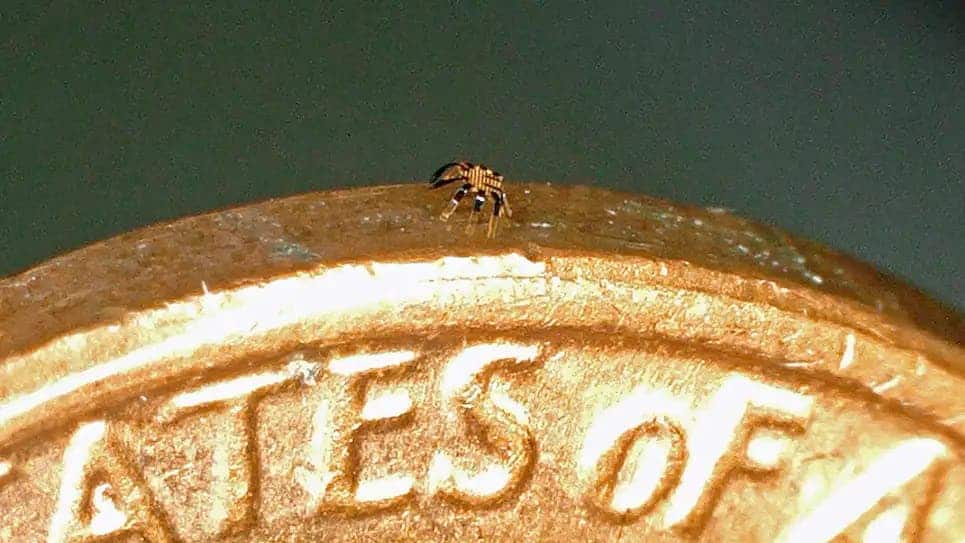
Don’t freak out or anything, but there are thousands of mites living on the surface of your body, most of which actually live on your face. It’s just that these are so tiny, that they can’t be seen with the naked eye. The smallest ones measure about 0.1 mm, while the largest measure around 6 mm. And don’t worry, they’re totally harmless.
I’m writing this just to preface the extraordinary nature of the latest robot to come out of Northwestern University. After they showcased the world’s smallest-ever human-made structure last year — basically a microchip with wings smaller than a grain of sand — the Northwestern engineers outdid themselves yet again by making a crab-like walking robot that is just half a millimeter wide, almost mite-sized.
The tiny crawling robot is controlled at a distance by a laser, making it the smallest-ever remote-controlled walking robot. It can bend, twist, crawl, walk, turn and even jump. This proof-of-concept may pave the way for more practical micro- and nano-sized robots that perform a number of useful tasks from delivering medicine to monitoring the environment inside tightly confined spaces — and that may include the human body, too.
“Robotics is an exciting field of research, and the development of microscale robots is a fun topic for academic exploration,” said Professor John A. Rogers, who led the experimental work. “You might imagine micro-robots as agents to repair or assemble small structures or machines in industry or as surgical assistants to clear clogged arteries, to stop internal bleeding or to eliminate cancerous tumors — all in minimally invasive procedures.”
Tiny insects and arthropods are very complex despite their size, having a nervous system that controls highly articulated limbs or wings. The researchers aren’t there yet with miniaturizing hardware, but their compromise is still very clever.
Rather than using all sorts of electronics, hydraulics, and other complex hardware, the researchers built their robot crab using an assembly technique inspired by children’s pop-up books. The walking crab structure started from very simple flat, planar geometries, which were bonded together by a rubber substrate. In its relaxed state, the different geometries buckle together causing the robot’s structure to “pop up” into a three-dimensional crab-like form.
The crab is made from a shape-memory alloy material, which does exactly what the name says — the elastic alloy changes to its “remembered” shape when environmental conditions are back to normal. For instance, when the researchers pointed a laser beam onto the robot, the elastic material deformed. But after it cooled down, the material returned to its baseline state, reshaping the robot.
These alternating phases drive locomotion. Scanning the robot from left to right causes it to move from right to left.
“Because these structures are so tiny, the rate of cooling is very fast,” Rogers explained. “In fact, reducing the sizes of these robots allows them to run faster.”
But why design a robot crab in the first place?
“With these assembly techniques and materials concepts, we can build walking robots with almost any sizes or 3D shapes,” Rogers said. “But the students felt inspired and amused by the sideways crawling motions of tiny crabs. It was a creative whim.”
The findings appeared in the journal Science Robotics.






